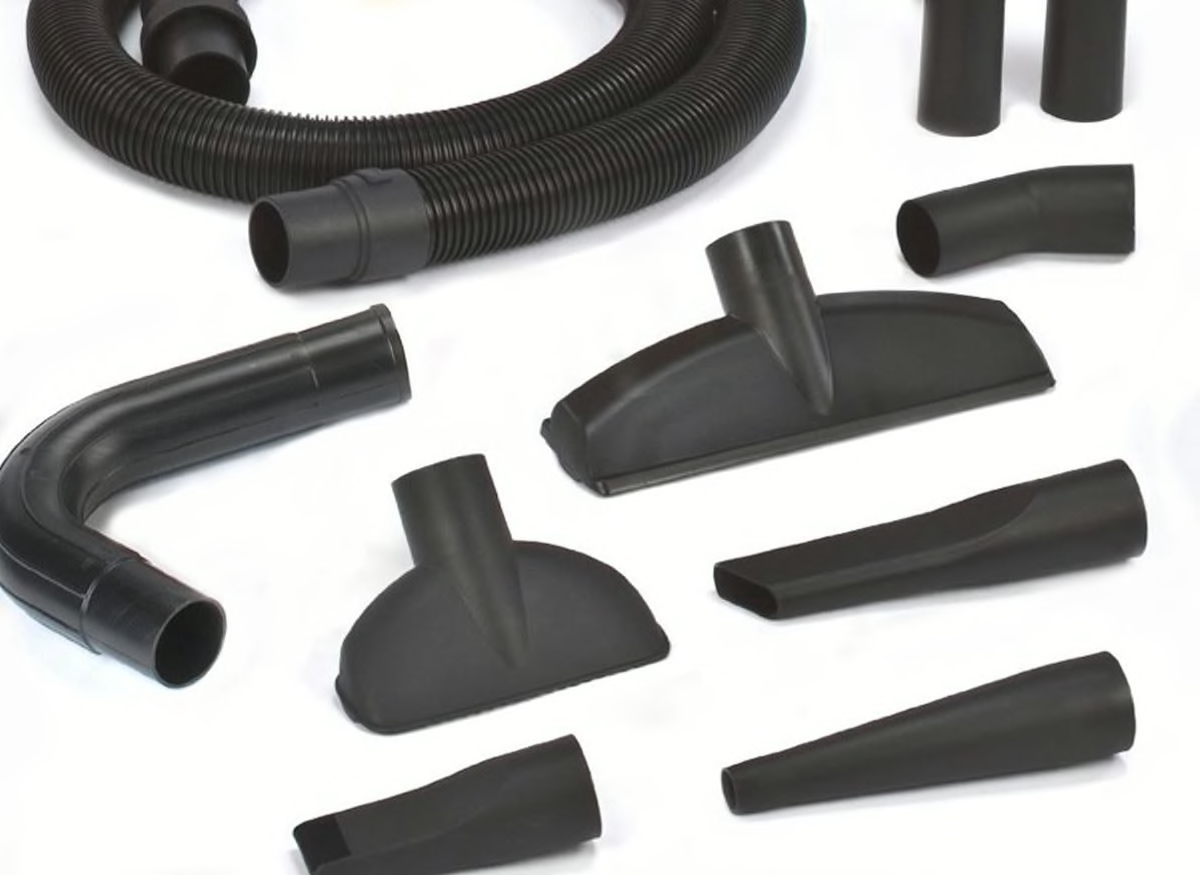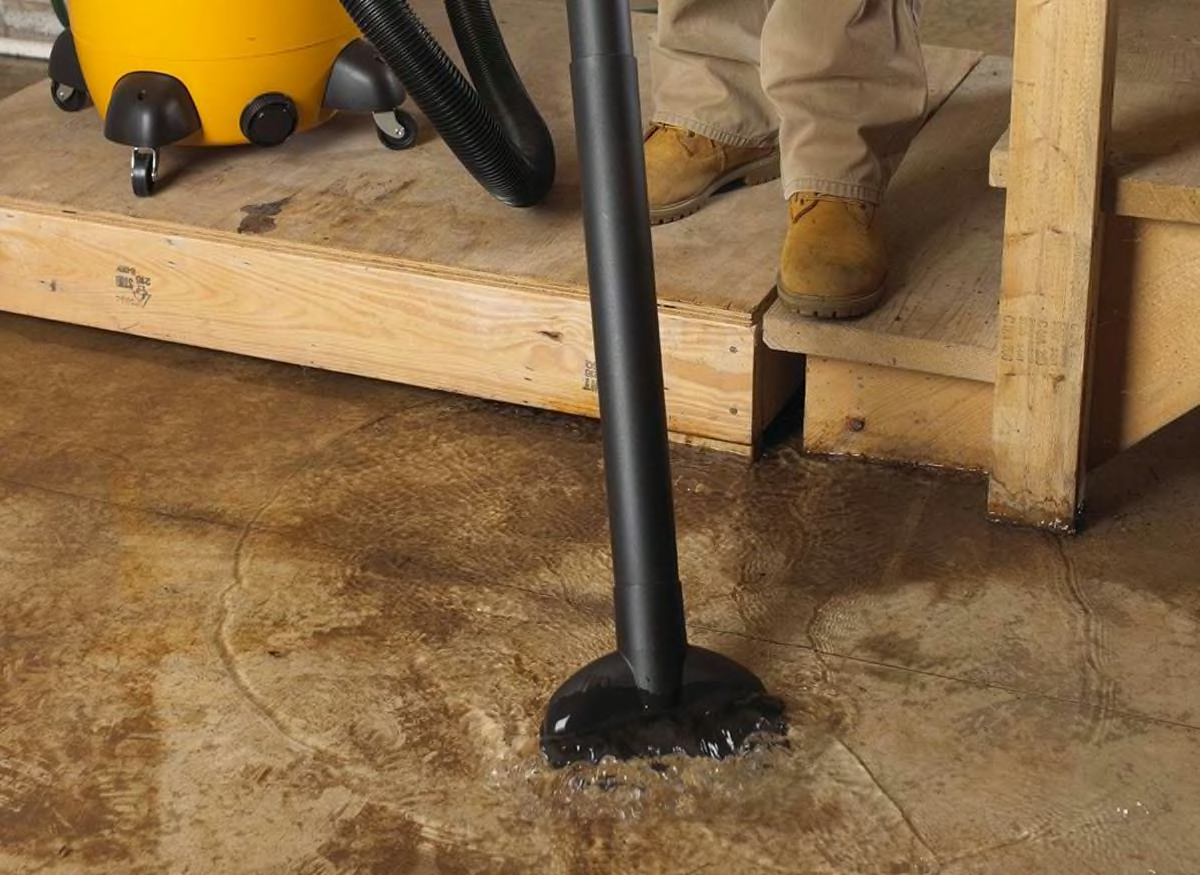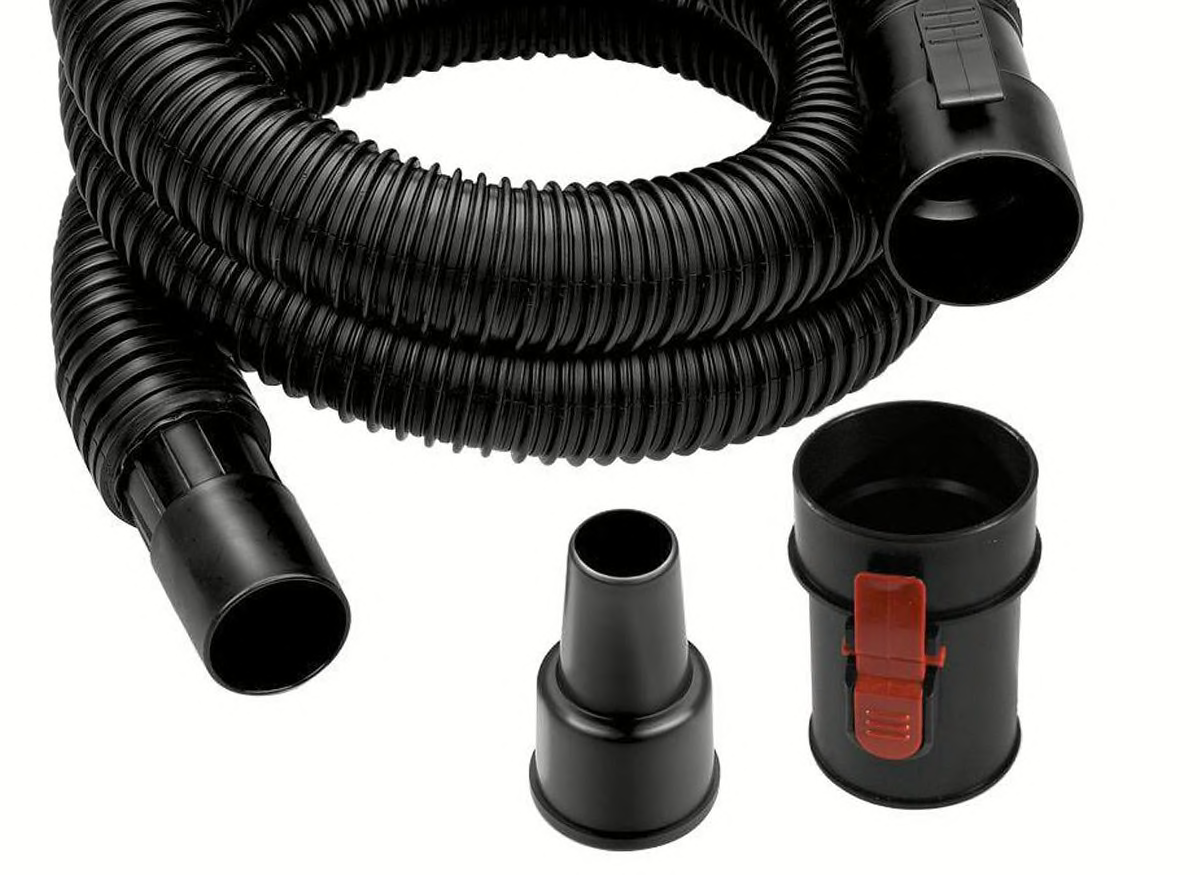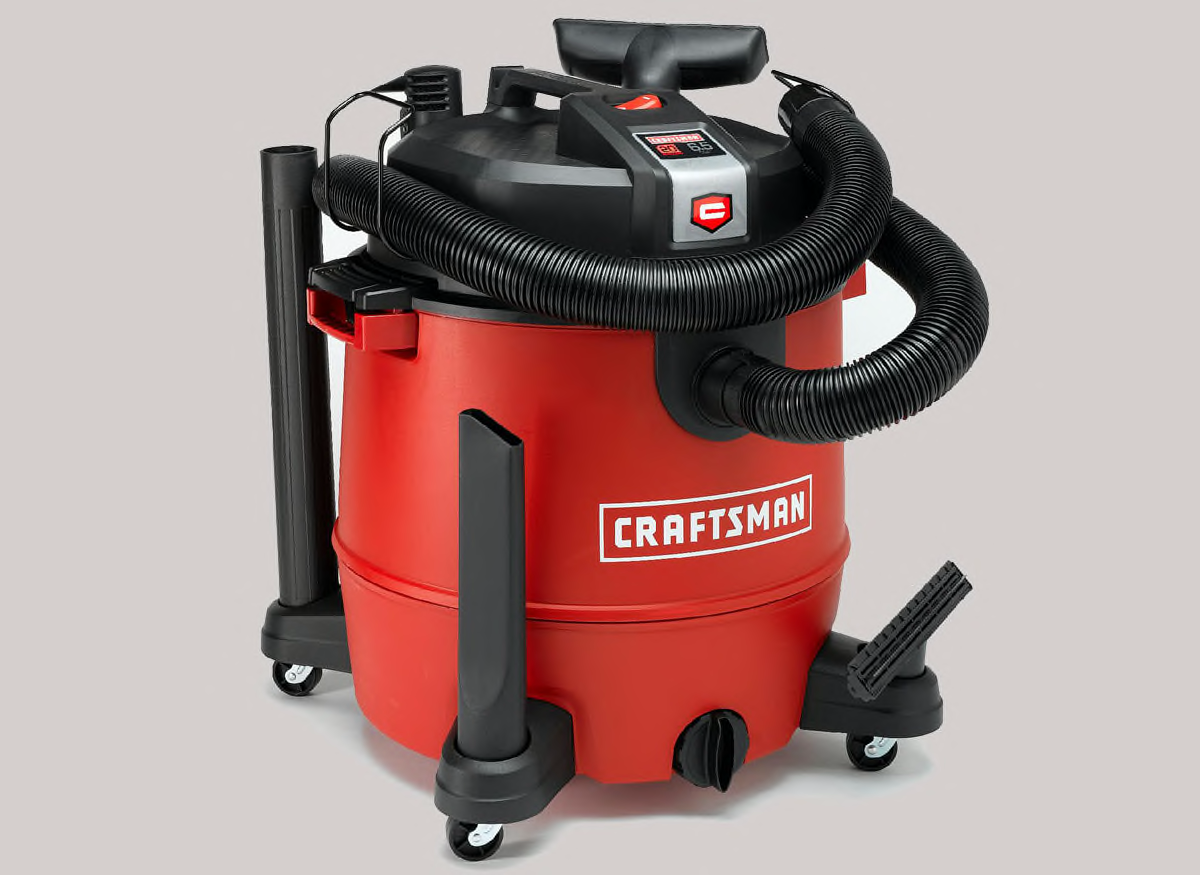
Wet/Dry Vacuum Buying Guide
Consumer Reports no longer updates this product category and maintains it for archival purposes only.
Homeowners and contractors alike depend on the take-no-prisoners, heavy-duty suction power of a wet/dry vacuum. From sawdust in the workshop to an overflowing bathtub, a wet/dry vacuum can make easy work of a tough mess.
Although Consumer Reports does not currently test wet/dry vacuums, we have put them through their paces in the past. We sucked up screws, wood pieces, and heavier debris in a demanding test of suction. A one-gallon spill tested their wet-cleaning ability.
We compared how well they picked up simulated wood flour, and then measured how much of that dust leaked into the air. Finally, we judged the ease of use of each vacuum’s features and accessories. Use this guide for determining the right model for your needs and budget.
What You Need to Know
Major brands are pushing stackable and cordless wet/dry vacuums and other new designs as they try to get wet/dry vacuums out of the basement and into the kitchen and living room. But cleaning ability should be your primary concern.
Consider Size
The largest models generally delivered the quickest, most thorough cleaning and the most capacity, and they tended to be the best equipped. But you may need a smaller, lighter vacuum—perhaps even a mini-sized model—if your home is shy on storage space or has more than one level.
Don’t Believe Capacity-Claim Hype
Most of the manufacturers overstated the fluid capacity of the vacuums we tested, some by as much as eight gallons. While those claims may correlate with the size of the vacuum’s collection area, our measurements are based on actual vacuuming until each vacuum’s internal float rose high enough to block further suction.
Do Protect Your Hearing
All of the wet/dry vacuums we tested were loud. Some reach 85 decibels, the level at which we recommend wearing ear protection to prevent hearing damage.
Wet/Dry Vacuum Types
Wet/dry vacuums are relatively basic. So choose one based on your cleaning needs, your storage—and how far you’ll need to move it. Here are the types of wet/dry vacuums to consider.
Mini-Sized Wet/Dry Vacuums
These sacrifice the most performance and capacity for the least weight and easiest storage.
Small Wet/Dry Vacuums
Consider these if you’re willing to sacrifice performance and capacity for easier portability.
Medium-Sized Wet/Dry Vacuums
These offer a good balance of performance and compactness.
Large Wet/Dry Vacuums
Powerful and best equipped for challenging cleanups. They hold the most debris, but can be heavy and bulky—especially when full of water.
Vacuum Features That Count
Small details may help make wet/dry vacuums more versatile. Here are the features to consider:
- 1
- / 10

Cleanup Tools
Most models come with a utility nozzle, for bulky debris, and a crevice nozzle for tight spots. Some also have a special nozzle for car interiors and an insert for a dusting brush. A squeegee attachment helps with spills. The one-piece version on some vacuums is more convenient than the insert on others.
PHOTO: SHOP VAC

Dual-Swivel Hose Fittings
Most vacuums we tested have two swivel fittings, one at each end of the hose, to help prevent kinks. A few have only one, at the canister end.
PHOTO: RIDGID

Dust Bag Around the Filter
A dust bag, about $3 to $8, keeps the inside of the vacuum cleaner, making the switch from dry to wet cleaning easier. It should also help the $10 to $20 cartridge filter last longer and maintain more suction. Some models include bags, while others make them an option. But think twice about pricey "high-performance" replacement bags. Our tests have shown that standard bags can securely hold a pile of bolts, nails, screws, and other debris while still allowing plenty of suction.
PHOTO: CRAFTSMAN

Extension Wands
Long ones reduce the need for stooping and kneeling.
PHOTO: SHOPVAC

Filter
Look for a pleated cartridge filter, found on most models. It’s easier to change and less prone to dust leaks than a two-piece paper-and-foam filter. Keep in mind, some odd-sized filters are hard to find beyond the manufacturer’s website. Check on filter availability before you buy a vacuum.
PHOTO: WORKSHOP

Hose Lock
This secures the hose to the canister more securely than a simple press-on fitting.
PHOTO: RIDGID

Off-the-Wall Designs
Traditional wet/dry vacuums roll around and take up space on the floor. Some models can clip onto a wall bracket or slide onto a shelf. But you pay for that convenience. Larger models typically hold more for about the same price but take up more storage space.
PHOTO: VACMASTER

Pump
Models with a drain spout often let you attach a pump and a garden hose so that you can empty the vacuum without lifting it and carrying it around. Some vacuums come with a pump; others will accept an aftermarket pump.
PHOTO: CRAFTSMAN

Tool Storage
Most vacuums have convenient brackets for holding extensions and tools. One toolbox-shaped model has storage space inside.
PHOTO: CRAFTSMAN

Wide Hose
Vacuums with a 2½-inch hose tend to work more quickly and with less clogging than those with a 1¼-inch hose.
PHOTO: SHOPVAC
Cleanup Tools
Most models come with a utility nozzle, for bulky debris, and a crevice nozzle for tight spots. Some also have a special nozzle for car interiors and an insert for a dusting brush. A squeegee attachment helps with spills. The one-piece version on some vacuums is more convenient than the insert on others.
PHOTO: SHOP VAC
Dual-Swivel Hose Fittings
Most vacuums we tested have two swivel fittings, one at each end of the hose, to help prevent kinks. A few have only one, at the canister end.
PHOTO: RIDGID
Dust Bag Around the Filter
A dust bag, about $3 to $8, keeps the inside of the vacuum cleaner, making the switch from dry to wet cleaning easier. It should also help the $10 to $20 cartridge filter last longer and maintain more suction. Some models include bags, while others make them an option. But think twice about pricey "high-performance" replacement bags. Our tests have shown that standard bags can securely hold a pile of bolts, nails, screws, and other debris while still allowing plenty of suction.
PHOTO: CRAFTSMAN
Extension Wands
Long ones reduce the need for stooping and kneeling.
PHOTO: SHOPVAC
Filter
Look for a pleated cartridge filter, found on most models. It’s easier to change and less prone to dust leaks than a two-piece paper-and-foam filter. Keep in mind, some odd-sized filters are hard to find beyond the manufacturer’s website. Check on filter availability before you buy a vacuum.
PHOTO: WORKSHOP
Hose Lock
This secures the hose to the canister more securely than a simple press-on fitting.
PHOTO: RIDGID
Off-the-Wall Designs
Traditional wet/dry vacuums roll around and take up space on the floor. Some models can clip onto a wall bracket or slide onto a shelf. But you pay for that convenience. Larger models typically hold more for about the same price but take up more storage space.
PHOTO: VACMASTER
Pump
Models with a drain spout often let you attach a pump and a garden hose so that you can empty the vacuum without lifting it and carrying it around. Some vacuums come with a pump; others will accept an aftermarket pump.
PHOTO: CRAFTSMAN
Tool Storage
Most vacuums have convenient brackets for holding extensions and tools. One toolbox-shaped model has storage space inside.
PHOTO: CRAFTSMAN
Wide Hose
Vacuums with a 2½-inch hose tend to work more quickly and with less clogging than those with a 1¼-inch hose.
PHOTO: SHOPVAC















